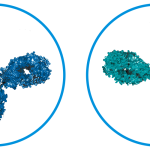Übersicht
Die High-tech Messgeräte und Analyseinstrumente von TA Instruments werden von Forscher:innen auf der ganzen Welt in verschiedenen Industriebereichen und für unterschiedlichste Anwendungsfälle eingesetzt. In unseren Blogbeiträgen erhalten Sie Einblicke in die Branchen, Fachwissen von Expert:innen und neuste Forschungsergebnisse, die mit unseren Instrumenten gemacht wurden. Schauen Sie gerne regelmäßig bei uns vorbei, um neue Blogartikel mit aktuellen Informationen und Anregungen zu entdecken.
Nach Technik filtern
Nach Anwendungen filtern

04/24/2025
ITC is the most sensitive method for characterizing binding interactions, revealing critical attributes like drug efficacy and stability. But without proper mixing, ITC data is unreliable and unusable. Great ITC experiments start with correct mixing.

10/28/2024
Powders are a big part of everyday life, from baking and laundry to cosmetics and pharmaceuticals. Understanding powder rheology—how powders flow and deform—is crucial for optimizing their use in various applications. This knowledge helps industries maintain consistency and product quality.

10/11/2024
Rheology is a notoriously complex field, combining mathematics and physics to characterize materials. For inexperienced users, rheology can seem like a massive challenge. Luckily, new technology simplifies rheology down to its core so you can get essential measurements without difficult training, measurements, or calculations.

09/30/2024
If you’re working with materials that can be flowed, for example within pharmaceutical, food, cosmetics, or petrochemical industries, it’s likely that there is a viscometer in the laboratory that is the go-to instrument for formulation testing or QA purposes. However, does this viscometer give you the whole picture and fully meet all your needs?

09/26/2024
Discover the RS-DSC from TA Instruments, the ultimate high throughput DSC for rapid thermal analysis. Learn more about its precision, speed, and capabilities.

09/23/2024
When it comes to selecting materials for your next innovative product, the material specification sheet is likely the first place that you will turn. This document provides core properties measured by the manufacturer and serves as an essential tool for supplier verification and new product development. However, while these sheets are reliable and provide a standard method for comparison, they often fail to tell the whole story.

09/09/2024
Our world is brimming with viscoelastic materials: The dough you knead before baking a fresh loaf, the Silly Putty your toddler slaps against the wall, the rubber gaskets that create an airtight seal on an airplane door. Testing those materials by applying controlled deformations (strains) or forces (stresses) at various timescales, temperatures, and/or humidities allows for the optimization of properties and ensures durability and safety.

08/19/2024
Biologic therapies derived from living organisms have revolutionized the treatment of complex diseases, yet their high development costs are often passed onto patients. Biosimilar drugs offer a promising solution to reduce costs while maintaining therapeutic efficacy. Unlike generic drugs, biosimilars cannot be exact replicas of their reference biologics due to their complex structures, necessitating rigorous testing and regulatory approval.

07/29/2024
The composites market is evolving fast. Global market projections indicate a 10.8 % growth by 2028, driven by the demand for composites across industries looking for materials with superior performance at reduced weight and cost. This blog explores how advanced material analysis can enhance R&D and manufacturing processes in the composites market, ultimately leading to financial savings and increased efficiency.

07/23/2024
The stability of high-concentration drugs can change under storage conditions, but until now, thermal testing in the lab using traditional calorimetry methods has been time-consuming and challenging. The new TA Instruments RS-DSC fills a critical antibody formulation development gap by allowing for high-throughput short-term thermal stability testing at formulation strength concentrations. In this blog, we explore why that’s essential.

